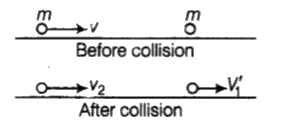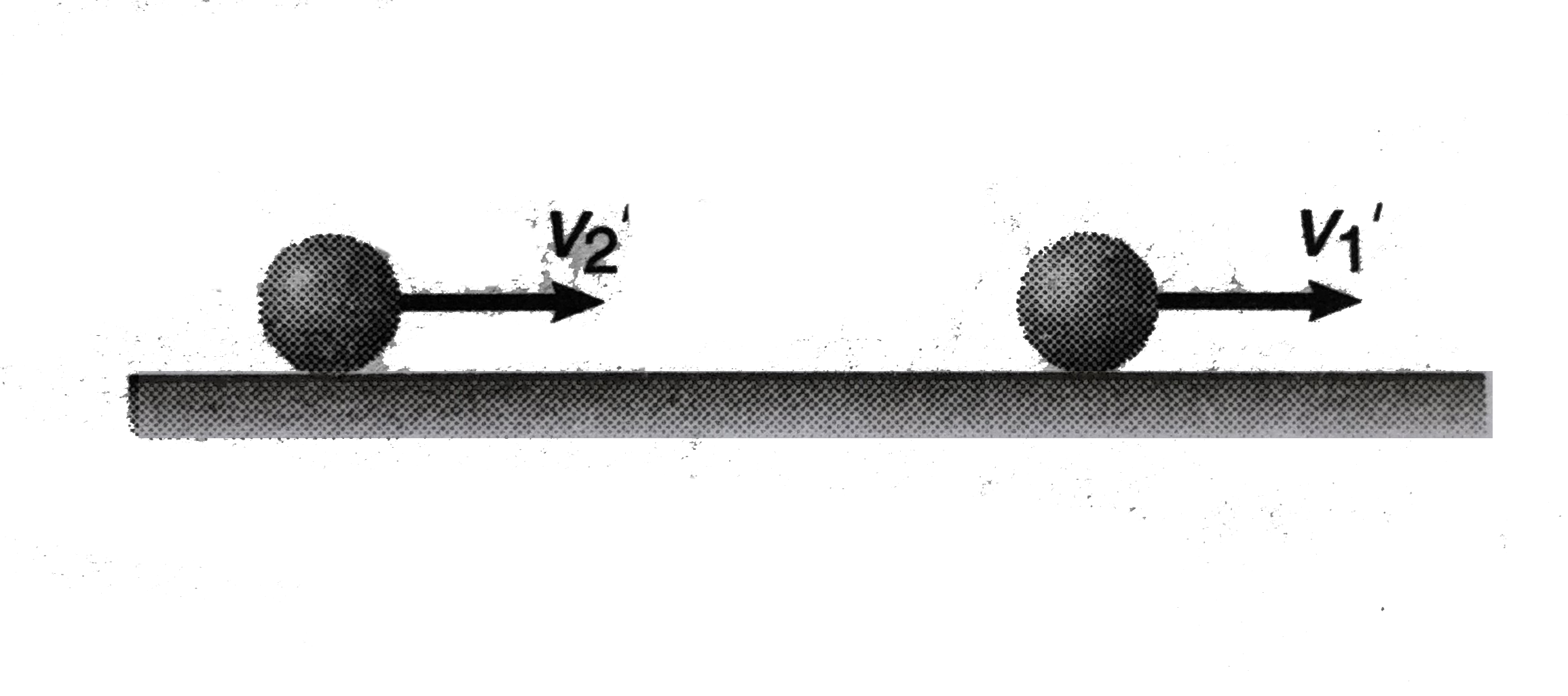A ball of mas m moving t a speed v makes a head on collisiobn with a identicalbl at rest. The kinetic energy of the blls after the collision is three fourths of the original. Find the coefficient of retitutioin.
Mas of 1st ball =m
and speed =v
Mass of 2nd ball =m
Let fiN/Al velocities of 1st and 2nd ball are v1andv2 respectively
Using law of conservation of momentum
m(v1+v2)=mv……i
→v1+v2=v…………ii
alsov1−v2=ev
Given that fiN/Al K.E.=34∈itialK.E.<br>rarr 1/2 mv_1^2+1/2mv_2^2=3/4xx1/2mv^2<br>rarr v_1^2+v_2^2=3/4v^2<br>rarr v_1^2+v_2^2=3/4v^2<br>rarr ((v_1+v_2)^2+(v_1-v_2)^2)/2=3/4v^2<br>rarr ((1+e^2)v^2)/2=3/4v^2<br>→1+e2=(32)
→e2=12
−e=1√2
Topper's Solved these Questions
- CENTRE OF MASS, LINEAR MOMENTUM, COLLISIONBOOK - HC VERMACHAPTER - CENTRE OF MASS, LINEAR MOMENTUM, COLLISIONEXERCISE - Objective 2
11 Videos
- CALORIMETRYBOOK - HC VERMACHAPTER - CALORIMETRYEXERCISE - Exercises
18 Videos
- CIRCULAR MOTIONBOOK - HC VERMACHAPTER - CIRCULAR MOTIONEXERCISE - Exercises
30 Videos
Similar Questions
On a frictionless surface, a ball of mass m moving at a speed v makes a head on collision with an identical ball at rest. The kinetic energy of the balls after the collision is 3/4th of the original. Find the coefficient of restitution.
View SolutionA ball of mass m moving at speed v makes a head on collision with an identical ball at rest. The kinetic energy of the balls after the collision is 3/4th of the original. Find the coefficient of restitution.
View Solution
Knowledge Check
Choose the most appropriate option.
A ball of mass m moving at a speed v makes a head on collision with an identical ball at rest. The kinetic energy at the balls after the collision is 3/4th of the original. What is the coefficient of restitution?
 A1/√3B1/√2C√2D√3
A1/√3B1/√2C√2D√3A ball of mass m moving with a speed v makes a head on collision with an identical ball at rest. The kinetic energy after collision of the balls is three fourth of the original kinetic energy. The coefficient of restitution is
A12B13C1√2D1√3A ball of 4kg mass moving with a speed of 3ms−1 has a head on elastic collision with a 6kg mass initially at rest. The speeds of both the bodies after collision are respectively
A0.6ms−1,2.4ms−1B−0.6ms−1,−2.4ms−1C−0.6ms−1,2.4ms−1D−0.6ms−1,−2.4ms−1
A ball of mass m moving at a speed v makes a head on inelastic collision with an identical ball at rest. The kinetic energy of the balls after the collision is 34th of the original. Find the coefficient of restitution.


View SolutionA ball of mass m moving with velocity u strikes another identical ball at rest. Find the velocities of the balls after the collision if the coefficient of restitution is e and the collision is head -on. Also , calculate the loss in K.E.
View SolutionA ball X of mass 1 kg travellingg at 2 m/s has a head-on collision with an identical ball Y at rest. X stops and Y moves off. Calculate the velocity of Y after the collision.
View SolutionA particle moving with kinetic energy E makes and head on elastic collision with an identical particle at rest. Durig the collision
View SolutionA body of mass m1 moving at a constant speed undergoes an elastic head on collision with a body of mass m2 initially at rest. The ratio of the kinetic energy of mass m1 after the collision to that before the collision is -
View Solution
